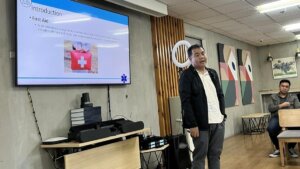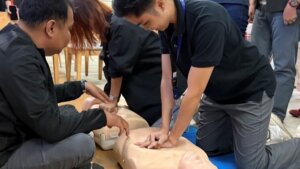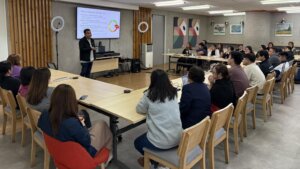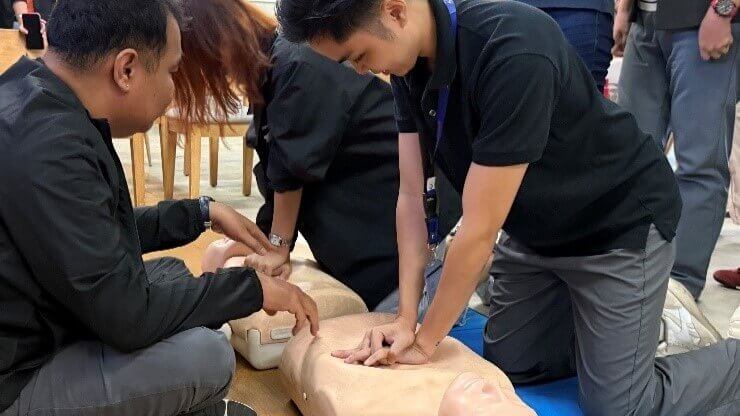Emergencies and disasters can strike at any time, making preparedness a crucial skill for individuals and communities. Recently, John Clements Consultants organized a two-session Emergency Preparedness Training program, which provided essential knowledge and hands-on training in first aid, CPR, disaster preparedness, and injury management during crises. The sessions were both educational and practical, equipping participants with the necessary skills to respond effectively to emergencies.


Session 1: First Aid and CPR Training
The first session focused on first aid and cardiopulmonary resuscitation (CPR), two lifesaving skills that are critical in emergencies. The instructors began by explaining the importance of first aid and the role of a first responder in an emergency. We learned how to assess a victim’s condition, ensure the scene is safe, and take appropriate action while waiting for professional medical help.
Key topics covered in this session included:
★ Basic wound care – How to clean and dress wounds to prevent infection.
★ Burn management – Differentiating between minor and severe burns and applying the right treatment.
★ Choking response – How to assist a choking victim using the Heimlich maneuver.
★ Fracture and sprain care – Immobilization techniques to prevent further injury.

The CPR training was a highlight of the session. The instructors demonstrated the proper technique for performing chest compressions and rescue breaths on both adults and children. We also learned how to use an automated external defibrillator (AED) to restore normal heart rhythm in cases of cardiac arrest. Hands-on practice helped reinforce these skills, making us more confident in performing CPR when needed.
Session 2: Disaster Preparedness and Injury Management
The second session shifted the focus to disaster preparedness and the types of injuries commonly encountered during disasters. The discussion emphasized the unpredictability of disasters such as earthquakes, floods, fires, and typhoons, highlighting the importance of planning and readiness.
Key takeaways from this session included:
★ Creating an emergency plan – Knowing evacuation routes, meeting points, and emergency contacts.
★ Building an emergency kit – Essential supplies such as food, water, medicine, flashlights, and first aid items.
★ Understanding disaster-specific risks – Learning how to respond to different natural and man-made disasters.


The session also covered common injuries during disasters, such as:
★ Head injuries from falling debris or accidents
★ Cuts and lacerations due to broken glass or sharp objects
★ Bone fractures caused by falls or collapsing structures
★ Shock and dehydration due to extreme conditions and lack of access to medical care
The training program provided practical guidance on handling these injuries in the absence of immediate medical attention. We learned how to stop bleeding, immobilize fractures, and recognize signs of shock to prevent complications before help arrives.
Empowering Preparedness for the Unexpected
The Emergency Preparedness Training was eye-opening and incredibly valuable. It highlighted the importance of learning first aid, CPR, and disaster response strategies. These skills help us protect ourselves and others during critical situations. While emergencies are unpredictable, being prepared can reduce risks and even save lives. This training gave me the knowledge and confidence to respond quickly and effectively. I now feel more equipped to make a real difference in my community’s safety.


Be Ready When It Matters Most
John Clements Consultants is committed to empowering individuals and organizations with practical, life-saving skills. Our Emergency Preparedness Training is just one way we help teams stay safe, capable, and resilient in any situation.
Contact us today to learn how we can support your organization.





